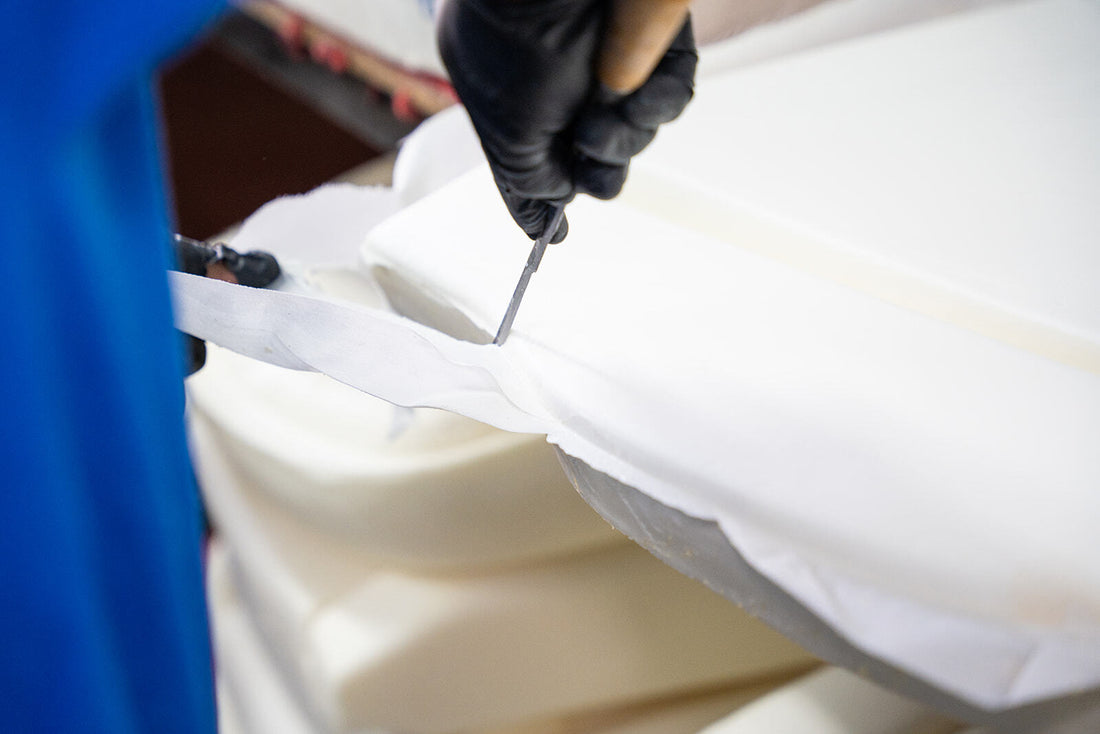By: Michael Satterfield
Automotive seat construction and cushioning materials have evolved significantly over time. From the earliest reference to an automotive seating type in the 1880s to today's modern car seats, every aspect of the construction of the automotive seat has changed. This article aims to provide insight into why those changes occurred and a historical perspective of cushioning materials.
1880s: The Beginnings of Automotive Seating
The earliest automotive seats were essentially similar to furniture seating, with large, padded seats. Rear seats were exceptionally palatial and comfortable for the gentry who could afford such splendid vehicles. The bench seat on the world's first petroleum-based fuel vehicle (1885) was a padded, leather bench seat that sat on springs mounted directly to the frame.
Since that time, the construction of the automotive seat and the cushioning material employed to provide the occupant a comfortable place to sit while operating a motor vehicle have continued to evolve. Some materials have stood the test of time, while others have been replaced by newer technologies.
1920s: The Evolution of Cushion Construction
In the 1920s, auto upholstery materials included springs, hair, cotton wadding, and battings, down, feathers, top materials, slipcover materials, coated ducks, cords, and bindings. Cushion construction in the 1920s consisted of the spring construction covered by sheeting, burlap, or other similar material that is tacked in place. On top of the sheeting, layers of hair are positioned and covered with muslin or another covering material, which is tacked in place. Finally, the dress cover is applied and "finished" to complete the seat.
The Role of Springs and Hair in Comfort
Springs are used as shock absorbers and as an aid in the comfort of vehicle occupants. Seat upholstery built of springs and hair, cotton, or other resilient materials is an important component that absorbs shocks from the highway. Thus, a well-constructed seat depends on the springs in the cushion and back to ensure it is comfortable, serviceable, and durable.
Manufactured woven, coil springs, interlaced, and bound with metal are the best choice. This construction consists of spiral springs linked together with metal clips to ensure they remain in place during use. The springs themselves are considered very important, and various manufacturers have patented special types and constructions.
Curled hair is considered to be the superior type of filling. The most important feature is its ability to spring back to its original shape when unloaded. Other materials can be used as a replacement for hair. Such substitutes are fiber, moss, excelsior, and various forms of cotton. Exceptionally down and feathers may be used in cushions.
Spring assemblies are stapled to a wood frame and must be firmly attached. The entire spring is covered with a piece of duck material and tacked to the wooden frame around the outer edges. The cushion is then built-up with hair or other material, and a layer of sheeting placed over the hair is stretched smoothly and tightly. After any other treatments, e.g., quilting, the sheeting is tacked to the wood frame.
Seat trimmers are reminded that cushion ventilation is important to prevent the seat from having a pneumatic feel and impart discomfort to the occupant. The use of good hair filling is recommended to give the best ventilation results.
1900s-1910s: The Use of Hair and Latex-Bonded Seating
In the 1900s and 1910s, car seats were stuffed with hair. Presumably, other vehicles manufactured both in Europe and North America also used hair as a cushioning material. To ensure the hair fibers did not disintegrate or loosen from the seats, latex-bonded seating interiors were developed. Initially, animal fibers were used, such as those from horses, cattle, and pigs. The last named were favored as they have the highest degree of curl and hence the best interlock.
1960s: The Introduction of Molded Polyurethane Foam
In the 1960s, molded polyurethane foam became the industry standard for

automotive seat cushioning. Polyurethane foam is ideal for automotive seats due to its excellent cushioning properties, durability, and affordability. Polyurethane foam is made by mixing a polyol and an isocyanate together. When these two materials combine, they form a chemical reaction that creates a foam. The foam is then molded into the desired shape and size.
Molded polyurethane foam is incredibly versatile and can be made to a wide range of densities and hardness levels. This allows manufacturers to create a variety of seat cushion designs that provide the perfect balance of comfort and support. Polyurethane foam can also be shaped to fit the contours of the human body, providing excellent support for the lower back and hips.
Recent Years: The Rise of High-Resilience Foam
In recent years, there has been a growing trend towards using high-resilience (HR) foam in car seats. HR foam is a type of polyurethane foam that has been specially formulated to provide superior comfort and support. HR foam is made by adding certain chemicals to the polyurethane foam during the manufacturing process. These chemicals create a more open-cell structure, which allows the foam to breathe better and provide better airflow. This, in turn, helps to regulate temperature and humidity levels inside the car.
HR foam has become increasingly popular in car seats due to its superior comfort and support. HR foam is also more durable than traditional polyurethane foam, making it an excellent choice for car seats that are subject to heavy use. HR foam is also more expensive than traditional polyurethane foam, but the benefits it provides make it a worthwhile investment.
The evolution of automotive seat construction and cushioning materials has been a long and fascinating journey. From the earliest padded leather bench seats to today's high-tech molded polyurethane foam and HR foam, car seats have come a long way. Despite the incredible changes in materials, seat construction specifications, and safety features, traditional construction materials such as springs, hair, and cotton wadding continue to be used in seat trimming today.

